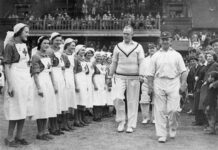Sports commentary has traditionally been the purview of former athletes and journalists who offer insightful opinions to help fans appreciate and understand the game. But in recent years, there has been an emergence of another voice in this arena: analytics. Utilizing data and statistics to predict sports performance has transformed coaching strategies, player recruitment practices, and commentary coverage alike – with data-driven insights providing viewers with a richer experience while revolutionizing how we discuss sports. This article explores this growing influence through an examination of its effect on viewers as well as altering how we discuss sports discussions today.
Historical Perspective: From Subjective to Objective Analysis
Sports commentary has long relied on subjective analyses provided by former players or coaches interpreting action on the field. Their perspective often provided colorful anecdotes or passionate arguments relating to personal experiences with a game, offering colorful anecdotes or passionate views. Now, however, objective 스포츠중계 analysis has come into its own; commentators no longer rely solely on subjective interpretations for analysis of games played on the field.
Analytics have added a whole new layer to sports commentary. By harnessing data from sensors, cameras, and other tracking technologies, analysts can now quantify various aspects of player performance like speed, accuracy, and decision-making – providing more evidence-based analyses instead of subjective reports.
An Impact of Analytics on Sports Commentary
Analytics have one of the greatest effects on sports commentary by improving storytelling. By having access to historical and real-time data, commentators are now able to weave narratives backed up with hard numbers like shooting percentage or defensive efficiency when discussing players, giving viewers a deeper understanding of each one’s impact on games.
Analytics have opened up new perspectives to commentators by helping to reveal trends and patterns that were once hidden from them. Now commentators can identify anomalous performance statistics, such as team success rates on third down or specific opponents; such insights add depth and intrigue to commentary as well.
Predictive Analysis: Looking Ahead
Analytics has given commentators another tool: predictive analysis. By examining trends and patterns within data, analysts can predict how a game or season might unfold, providing viewers with an indication of what lies ahead.
Commentators can use statistical models to predict the outcome of games using factors like team performance, player injuries, and weather conditions. This analysis adds a layer of excitement and anticipation as viewers speculate on its accuracy.
Technology’s Role: Real-time Insights
Technological advancements have further amplified the influence of analytics on sports commentary. Thanks to real-time data streaming and visualization tools, commentators are now able to access and analyze game data as it unfolds – offering instantaneous insights and observations they can share with viewers in real-time.
Commentators during live broadcasts can employ data visualizations to help viewers better appreciate key moments in a game, such as a player’s speed during a breakaway or the trajectory of a basketball shot. Such visual aids not only engage viewers but also give them a deeper appreciation of the athleticism and skill involved with sports.
Challenges and Controversies
While analytics integration into sports commentary offers numerous advantages, it also comes with some difficulties and debate. Critics fear an overreliance on statistics can reduce athletes to mere statistics; furthermore, there’s the concern that commentators could misinterpret or misrepresent data leading to inaccurate analysis. , however, objective sports analysis has come into its own; commentators no longer rely solely on subjective interpretations for analysis of games played on the field.
As analytics can also commoditize sports commentary, as commentators depend on similar statistical metrics and trends for analysis, this could potentially stifle creativity and diversity by pressuring commentators to conform to data-driven narratives.
Conclusion:
The Future of Sports Commentary Its Analytics have had an enormously transformative effect on sports commentary, changing how we observe and interpret games we love. By providing objective insights and predictions, analytics have enhanced viewers’ experiences by offering a deeper understanding of player performance and game strategies.
Striking a balance between data-driven analysis and traditional storytelling that has long characterized sports commentary is essential to providing informative, entertaining, and compelling commentary that resonates with sports fans around the globe. By drawing upon both approaches equally well, commentators can ensure they deliver timely and effective commentary that speaks directly to fans’ interests and goals.
































